 January 15, 2015 John E. Ross, KD8IDJ, Editor
| ||||||
ARRL Board of Directors Annual Meeting Set for January 16-17 Two newly elected members will be at the table when the ARRL Board of Directors holds its annual meeting Friday and Saturday, January 16-17, in Windsor, Connecticut. Tom Abernethy, W3TOM, will participate for the first time as Atlantic Division Director. Formerly the Two new faces will be among the contingent of Vice Directors at this week's meeting: Bob Famiglio, K3RF, was elected last fall to succeed Abernethy as Atlantic Division Vice Director, and Art Zygielbaum, K0AIZ, was appointed recently to fill the Midwest Division Vice Director vacancy, created when Blocksome was elected as Director. As one of its first orders of business, the Board will elect members of the ARRL Executive Committee as well as one-third of the ARRL Foundation Board of Directors membership. The Board also will receive reports from the officers and committees and will consider recommendations contained in the reports. ARRL Centennial QSO Party Awards, W1AW/p QSL Cards in Process Certificates and plaques for stations that participated in the ARRL Centennial QSO Party are being processed. At this point, point totals are being calculated and confirmed. Participation exceeded expectations, with nearly 16,000 stations achieving at least 1000 points in the Centennial QSO Points Challenge. Approximately 2500 stations reached the Top Level of 15,000 points. W1AW portable operations completed nearly 3.5 million contacts during 2014, and W100AW logged some 70,000 contacts. Most Centennial QSO Party participants entered their contact information into the ARRL's Logbook of The World (LoTW) program.
Deadline Extended The ARRL has extended the deadline to submit Centennial QSO Party logs to LoTW to January 22, at 2359 UTC. The new deadline will have no effect on awards. Participants will be able to apply for Centennial awards indefinitely, once the process is under way. Accounts for US stations that changed call signs during 2014, will be automatically combined for Centennial award purposes, although any duplicate contacts (ie, stations worked with both the old and new call signs) will be removed. Stations outside the US that changed call signs during 2014 should notify ARRL.
Designs for QSL cards for W1AW portable operations are under consideration, and cards likely will go out via the QSL Bureau and directly to stations in a few months. US stations who prefer to receive W1AW QSLs via a QSL Bureau account may sign up via the web form. "You must have a current, funded account with your district QSL Bureau," Patton noted. Stations outside the US will receive cards via their bureaus as they normally do. Patton said the number of QSLs from W1AW will be limited to one per each weekly operation and per each territorial operation (KH2, KH8, etc), with each card confirming about 10 contacts chosen from the W1AW logs. Printed cards will not be able to confirm counties or grid squares, but the LoTW system will do this. The ARRL January VHF Contest Offers a Break from Winter's Doldrums If the Polar Vortex has been getting you down, then the ARRL January VHF Contest might just be the antidote! The event gets under way at 1900 UTC on Saturday, January 24, and it wraps up at 0359 UTC on Monday, January 26. The object is for amateurs in the US and Canada (and possessions) to work as many amateur stations in as many different Maidenhead grid squares as possible using frequencies above 50 MHz. It's the US and Canada (and possessions) working each other and the rest of the world (think F2 propagation!). "You do not need a huge VHF/UHF antenna farm to compete and have fun," said ARRL Contest Branch Manager Matt Wilhelm, W1MSW. He pointed out that even portable and rover operators have been quite successful. "January VHF/UHF propagation enhancements often just pop up," he added, with tropospheric and even extended aurora possible.
Getting on the VHF/UHF bands is easy, and Technician licensees have access to all amateur bands above 50 MHz. Antennas for VHF and UHF frequencies are far smaller than their HF counterparts. Most modern transceivers have 6 meter capability, and sometimes even an HF dipole can be used to work some DX on 6. Contest contacts may be made using SSB, CW, and even FM simplex, but keep calling frequencies such as 146.52 MHz clear of contest activity. The January VHF Contest offers Single Operator and Multioperator categories, and there is even a Single Operator, FM-only category, as well as a Single Operator, 3-Band (50 MHz, 144 MHz, and 440 MHz) category. For 2015 three new categories have been introduced: Single Operator Unlimited High Power, Single Operator Unlimited Low Power, and Single Operator Unlimited Portable. All entries must be e-mailed or postmarked no later than 0359 UTC on Wednesday, February 25, 2015. Submit Cabrillo-formatted logs via e-mail. Mail paper logs to ARRL January VHF Contest, 225 Main St, Newington, CT 06111. Contact the ARRL Contest Branch for more information. ARRL Library Goes Live! After several months of planning, The ARRL Library is now live! The online Library is a free repository of educational presentations and oral histories. It is aimed at helping to preserve Amateur Radio's history and to educate clubs and individuals.
Kutzko said the Library will initially consist of three major areas. These will include PowerPoint presentations that may be used at club meetings, for outreach to the general public, or for other public presentations; PDFs of general educational material about Amateur Radio, and oral histories of radio amateurs describing their personal experiences with Amateur Radio. Current content includes presentations on operating digital modes, HF basics, and impedance matching. While the available material is sparse right now, Kutzko invites all radio amateurs to submit material for consideration -- as long as it relates to Amateur Radio. The Public Relations Committee will vet all submissions, and once a submission is approved, it will be added to The ARRL Library.
"We have lots of tutorials and information on how to create presentations on the site," Kutzko pointed out. "Presenting somebody else's PowerPoint slides is tough," he added, "so we're asking people who submit presentations to make use of PowerPoint's 'Notes' feature, which allows the author to provide more detailed information for the talking points found on each slide, visible only to the presenter. This will make it easier for the presenter to emphasize what the author intended to convey." Answers to typical questions, as well as information on how to upload content and how to conduct an oral history interview, can be found in the Frequently Asked Questions area. "Sharing expertise is one of the best things we can do for Amateur Radio," Kutzko said. "I hope you will consider submitting material for the Library and help give back to the entire community." FCC Fines Pennsylvania Ham $11,500 for Causing Intentional Interference The FCC Enforcement Bureau has affirmed an $11,500 fine against Brian Crow, K3VR, of North Huntingdon, Pennsylvania, for deliberately interfering with other Amateur Radio communications. The FCC had first proposed the fine last July in a Notice of Apparent Liability for Forfeiture (NAL), and it released a Forfeiture Order on January 13. The FCC said it imposed the financial penalty because of Crow's "willful and repeated violation" of Section 333 of the Communications Act and of Sections 97.101(d) and 97.119(a) of the Amateur Service rules "by causing intentional interference to licensed radio operations and failing to transmit his assigned call sign."
In both instances, the FCC said, it responded in March 2014 to "several complaints of intentional interference" on 14.313 MHz, and Commission agents used radio direction-finding techniques to pin down the transmission sources. According to the NAL issued to Crow, FCC agents monitored transmissions from his station for approximately 3 hours on March 14, 2014, and heard him transmit slow-scan television (SSTV) signals and "a pre-recorded voice transmission of another amateur station on the frequency." "These transmissions prevented other amateur licensees from communicating over the frequency," both NALs said, adding that neither Guernsey or Crow transmitted their assigned call signs while the agents were listening. The FCC agents visited Crow's residence and asked to inspect his station, which they confirmed was capable of operating on 14.313 MHz. Crow denied operating his station that morning, however, and claimed that he was not at home when the interfering transmissions occurred. The Enforcement Bureau had warned both Guernsey and Crow in the past regarding interference to other Amateur Radio operators. In Crow's case, the FCC said the fact that he subsequently interfered with other amateur operators "demonstrates a deliberate disregard for the Commission's authority," warranting an upward adjustment of $3500 to his proposed base forfeiture. Guernsey's case is still pending. Yasme Foundation Announces Award Winners, Grant Recipients The Yasme Foundation Board of Directors has announced the recipients of several awards and monetary grants. The Foundation named four individuals to receive the Yasme Excellence Award for 2014 as well as eight specific grant recipients. Honored as Yasme Excellence Award winners were:
The Yasme Foundation also has designated several entities and one individual to receive monetary grants to further their contributions to and efforts on behalf of Amateur Radio. Grants included:
The Yasme Foundation is a not-for-profit corporation organized to conduct scientific and educational projects related to Amateur Radio, including DXing and the introduction and promotion of Amateur Radio in developing countries. -- Thanks to Yasme Foundation President Ward Silver, N0AX ARRL's "First Couple" Spotlighted in Article Highlighting SKYWARN's Role A January 9 article in Virginia's Roanoke Times newspaper featured the participation of ARRL President Kay Craigie, N3KN, and her husband Carter, N3AO, in the SKYWARN weather-spotting program. The Craigies, who live in the Southwest Virginia town of Blacksburg -- home to Virginia Tech -- have a home weather station and, when severe weather threatens, are able to supplement local National Weather Service (NWS) office meteorologists with "ground-level" weather observations.
The article cited meteorologist Phil Hysell, who pointed out that weather spotters can provide local observations that indicate what's happening below the radar and in "areas where other tools cannot see." "It's just one of the ways you can give back to society by just playing with a radio," the article quoted President Craigie. The article noted the ongoing need for weather spotters and tells how to become a SKYWARN spotter, pointing to an online course and test that individuals can take to become official weather spotters. A list of SKYWARN training classes in Virginia accompanied the article. Read more. EP6T Iran DXpedition Team En Route Members of the Rockall DX Group in Belgium are on their way to their Kish Island, Iran (IOTA AS-166), DXpedition site. The group plans to operate starting this weekend for about 10 days as EP6T. Iran is #33 on ClubLog's DXCC Most Wanted List. The DXpedition will operate on all bands, 160 through 10 meters, with an emphasis on the low bands. EP6T plans to remain active until January 26. Organizers say the DXpedition's theme will be "friendship and cultural tolerance."
"[W]e want to ask people in Europe and Asia for your cooperation when we have propagation to North America, since this is the most difficult path on all bands," the release said. "Listen to the operators' instructions, and we will all be enjoying the pileups." The EP6T team seeks signal reports via e-mail from North America on 10 meters and 160 meters. The EP6T log will be uploaded to Logbook of The World (LoTW), once the DXpedition has concluded. CQ Magazine Combining January, February Issues, Closing CQ Plus Digital Supplement CQ magazine has announced plans to publish a combined January/February 2015 issue and to cease publication of its CQ Plus digital supplement as of the March 2015 issue. Publisher Dick Ross, K2MGA, said that both moves are intended to help restore the magazine's normal schedule for its print edition and to strengthen its foundations moving forward as it enters its 8th decade of publication. "These decisions were not made lightly," Ross added, "but in recognition of the realities of the publishing industry. It's a tough time to be in the magazine business, and we appreciate the patience and loyalty of both our readers and our advertisers."
CQ will continue to publish both print and digital editions, but the digital edition will no longer contain the 50-60 additional pages each month that constituted CQ Plus. Editor Rich Moseson, W2VU, said he hopes to include some CQ Plus content within the pages of CQ, but added that ham radio will remain the magazine's primary focus. CQ marks its 70th publication anniversary with its January/February issue. The magazine also announced that, "as a consequence of the changes," CQ Plus Editor Richard Fisher, KI6SN, will leave the CQ staff after serving for many years as a columnist for -- and then as editor of -- Popular Communications, WorldRadio Online, and CQ Plus. He was also CQ magazine's emergency communications editor. Due to the combined January/February issue, CQ will extend by 1 month all print and digital edition subscriptions to CQ. CQ also has named veteran DXer, DXpeditioner, and QSL manager Bob Schenck, N2OO, as its DX editor. He succeeds Wayne Mills, N7NG, who stepped down to pursue other ham-related interests, CQ said. Shin'en 2 Designated as Fuji Oscar-82 AMSAT has designated the Shin'en 2 spacecraft as Fuji OSCAR-82 (FO-82), in response to a request from Seiji Fukushima, JH6RTO. OSCAR Number Administrator Bill Tynan, W3XO, congratulated Fukushima and the Fuji OSCAR-82 team on behalf of AMSAT-NA and the Amateur Satellite community, and expressed the hope that the spacecraft would "fulfill all of its mission objectives."
Built by students at Kagoshima University Graduate School of Engineering in Japan, the 17 kg satellite Shin'en 2 identifies as JG6YIG. Shin'en2 carries a 0.1 W CW beacon on 437.505 MHz and telemetry on 437.385 MHz (0.8 W) using a mode similar to WSJT. It also will carry a F1D digital store-and-forward transponder with an uplink of 145.95 MHz and a downlink at 435.27 MHz (0.4 W), but not the Amateur Radio Mode J linear transponder announced earlier. The data format is posted on the Kagoshima University website. Shin'en2 will have an elliptical orbit around the Sun and travel to a deep space orbit between Venus and Mars. Its inclination will be almost zero, which means Shin'en 2 will stay in Earth's equatorial plane, and the distance from Earth will be between approximately 6.5 million and 12 million miles. Shin'en 2 and ARTSAT2: DESPATCH were launched December 3 on the vehicle that took the Hayabusa 2 asteroid sample-return mission into deep space. ARTSAT2, which also carried an Amateur Radio payload, stopped transmitting recently after its batteries depleted. -- Thanks to AMSAT News Service, Kagoshima University BSA Encouraging Early Start on JOTA 2015 Planning The word from Boy Scouts of America (BSA) National Jamboree on the Air (JOTA) Organizer Jim Wilson, K5ND, is: "Start planning for JOTA 2015. It's never too early." JOTA 2015 won't take place until October (Friday through Sunday, October 16-18), but the Radio Scouting (K2BSA) website provides some planning tips to help get a leg up on the process. The annual JOTA offers an opportunity for Boy and Girl Scouts and Guides around the world to speak with each other via Amateur Radio, and its success relies on the cooperation of local radio amateurs and clubs.
Wilson's extra-early JOTA advisory appeared aimed at boosting JOTA involvement in the wake of a somewhat disappointing 2014 report showing a continued decline in participation. In 2013, JOTA participation was down by nearly 4700 over 2012, and it dropped a bit further in 2014, when 7208 Scouts and 5589 visitors took part in the annual on-the-air event. "[W]e recognize that we need to do a better job promoting the event to Scout Council staff and volunteers," Wilson conceded last fall, after the 2014 report was posted. Wilson attributed part of the decline in JOTA participation to a failure of some stations to file after-event reports. "Our survey of those that did not file a report revealed that a few didn't run the event due to other issues," Wilson said in a JOTA e-newsletter last weekend. "One was dodging a hurricane. Others said that time got away from them, and they just didn't file it." According to the 2014 report, 354 stations registered to participate, but only 205 filed reports. Wilson recommended that JOTA teams designate someone to record the data and file the report after the event. He also steered JOTA planners to some program suggestions for JOTA 2015. Foundation for Amateur Radio (FAR) Invites Scholarship Applications The non-profit Foundation for Amateur Radio (FAR) invites applications for the Amateur Radio-related scholarships it administers. These academic awards are sponsored by individuals and by Amateur The preferred method to apply is by using the electronic form on the FAR website. Visit the FAR Scholarship Information page or contact FAR, if you have questions about the 2015 scholarship application process. Read more. In Brief...
The K7RA Solar Update Sunspot numbers and solar flux rose again this week, while geomagnetic indices were relatively quiet. Average daily sunspot numbers increased from 108.1 in the first week of 2015 to 112.6 in the 7 days following. Average daily solar flux rose from 144.7 to 151.3.
Predicted planetary A index is 15, 10, 8, and 12 on January 15-18, 8 on January 19-21, then 15, 5, 10 and 18 on January 22-25, and 15, 8, 5, 10, and 12 on January 26-30 and 15 on January 31 through February 1. This weekly "Solar Update" in The ARRL Letter is a preview of the "Propagation Bulletin" issued each Friday. The latest bulletin and an archive of past propagation bulletins is on the ARRL website. In Friday's bulletin look for an updated forecast and reports from readers. Send me your reports and observations. Just Ahead in Radiosport
See the ARRL Contest Calendar for more information. Upcoming ARRL Section, State, and Division Conventions and Events
Find conventions and hamfests in your area.
ARRL -- Your One-Stop Resource for
Subscribe to...
Free of charge to ARRL members...
| ||||||
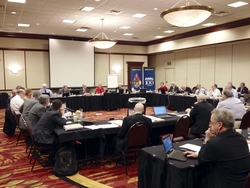 Division's Vice Director, Abernethy was elected last fall to replace Bill Edgar, N3LLR, who did not run for another term as Director. Rod Blocksome, K0DAS, will take part in his first meeting as the Midwest Division Director, following his election last fall. The former Vice Director succeeded Cliff Ahrens, K0CA, who opted not to run for another term as Director.
Division's Vice Director, Abernethy was elected last fall to replace Bill Edgar, N3LLR, who did not run for another term as Director. Rod Blocksome, K0DAS, will take part in his first meeting as the Midwest Division Director, following his election last fall. The former Vice Director succeeded Cliff Ahrens, K0CA, who opted not to run for another term as Director.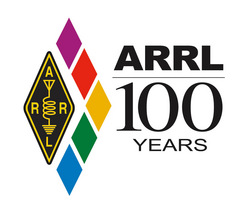 "The W1AW WAS certificate and plaque designs are complete, as is the design for the Centennial Points Challenge certificate," said ARRL Field Services and Radiosport Manager Dave Patton, NN1N. "Once the web and software processes are ready to go, we will be able to start fulfilling awards." Patton said order forms will be available on the
"The W1AW WAS certificate and plaque designs are complete, as is the design for the Centennial Points Challenge certificate," said ARRL Field Services and Radiosport Manager Dave Patton, NN1N. "Once the web and software processes are ready to go, we will be able to start fulfilling awards." Patton said order forms will be available on the 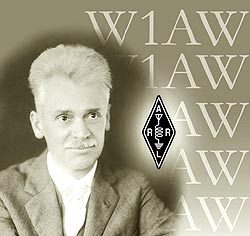 Patton said that in late January, the entire database of 2014 logs submitted to LoTW will be rerun through the Centennial QSO Party software in order to pick up any late changes to the database and produce more accurate scores. "Most participants will see their points total climb a bit higher," he said.
Patton said that in late January, the entire database of 2014 logs submitted to LoTW will be rerun through the Centennial QSO Party software in order to pick up any late changes to the database and produce more accurate scores. "Most participants will see their points total climb a bit higher," he said.
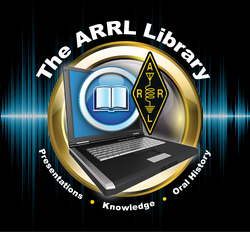 "This long-term project will be home to what I hope will eventually become one of the largest repositories of Amateur Radio-related papers and presentations, created by and for the Amateur Radio community," said ARRL Media and Public Relations Manager Sean Kutzko, KX9X. "This is your opportunity to submit material for the betterment and education of all radio amateurs."
"This long-term project will be home to what I hope will eventually become one of the largest repositories of Amateur Radio-related papers and presentations, created by and for the Amateur Radio community," said ARRL Media and Public Relations Manager Sean Kutzko, KX9X. "This is your opportunity to submit material for the betterment and education of all radio amateurs."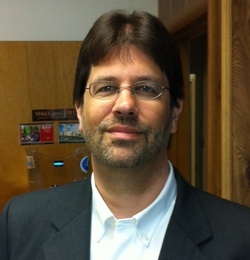
.jpg) The FCC said that Crow did not respond to the 2014 NAL and that, based on the information before the Commission, affirmed its proposed fine. On July 22, 2014, the FCC also issued a similarly worded
The FCC said that Crow did not respond to the 2014 NAL and that, based on the information before the Commission, affirmed its proposed fine. On July 22, 2014, the FCC also issued a similarly worded 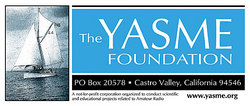 The Yasme Excellence Award is presented to individuals who, through their own service, creativity, effort, and dedication, have made a significant contribution to Amateur Radio in technical, operating, or organizational achievement.
The Yasme Excellence Award is presented to individuals who, through their own service, creativity, effort, and dedication, have made a significant contribution to Amateur Radio in technical, operating, or organizational achievement.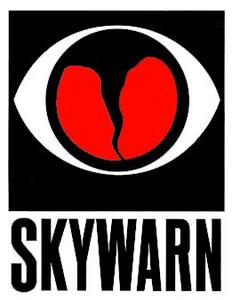 The article, by Robby Korth of the newspaper's New River Valley Bureau, noted that the Craigies are among some 2000 SKYWARN members -- many of them radio amateurs -- who work with the NWS to, as the article says, "verify and give information to issue warnings and also to stress the danger of weather events to the 40 counties covered by the Blacksburg office of the National Weather Service."
The article, by Robby Korth of the newspaper's New River Valley Bureau, noted that the Craigies are among some 2000 SKYWARN members -- many of them radio amateurs -- who work with the NWS to, as the article says, "verify and give information to issue warnings and also to stress the danger of weather events to the 40 counties covered by the Blacksburg office of the National Weather Service."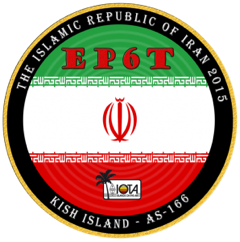 "We have 30 fully packed suitcases filled with radio equipment and antennas. Radios will be carried as hand luggage," the team's latest media release said. "We expect arrival on Kish Island January 16 early morning. As soon as we have approval from the local police, we can start building antennas." EP6T is expected to be up and running in the early hours of January 17.
"We have 30 fully packed suitcases filled with radio equipment and antennas. Radios will be carried as hand luggage," the team's latest media release said. "We expect arrival on Kish Island January 16 early morning. As soon as we have approval from the local police, we can start building antennas." EP6T is expected to be up and running in the early hours of January 17.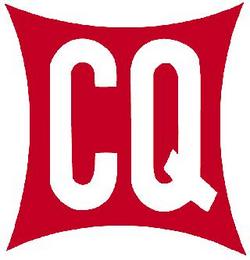 CQ announced last February that it was incorporating content from the magazine's three sister publications --
CQ announced last February that it was incorporating content from the magazine's three sister publications -- 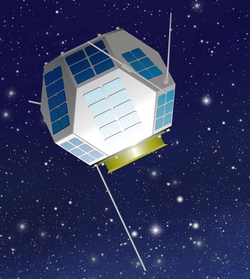

 Radio clubs across the US. The FAR scholarship application process is open to Amateur Radio licensees worldwide. For 2015 FAR is administering 67 scholarships worth an aggregate $125,500. The list includes 36 Quarter Century Wireless Association (QCWA) scholarships worth a total of $77,000 for 2015 (these require a recommendation from a QCWA member). Individual awards range from $500 to $5000. Applications are due by March 30, 2015.
Radio clubs across the US. The FAR scholarship application process is open to Amateur Radio licensees worldwide. For 2015 FAR is administering 67 scholarships worth an aggregate $125,500. The list includes 36 Quarter Century Wireless Association (QCWA) scholarships worth a total of $77,000 for 2015 (these require a recommendation from a QCWA member). Individual awards range from $500 to $5000. Applications are due by March 30, 2015.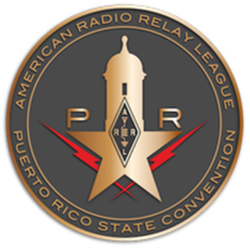 ARRL President to Attend Puerto Rico State Convention, January 23-25: While a good part of the US is experiencing frigid temperatures, snow, and ice, radio amateurs in Puerto Rico will be warmly welcoming visitors to their third ARRL Puerto Rico State Convention, January 23-25 at the Francisco "Pancho" Deida Coliseum in Hatillo. ARRL President Kay Craigie, N3KN, will head an ARRL contingent to Caribbean's largest ham radio convention. Others will include Southeastern Division Director Doug Rehman, K4AC, Vice Director Michael Lee, AA6ML, and QST Columnist Ward Silver, N0AX. Contester and Western Pennsylvania Section Manager Tim Duffy, K3LR, will conduct the first Contest University (
ARRL President to Attend Puerto Rico State Convention, January 23-25: While a good part of the US is experiencing frigid temperatures, snow, and ice, radio amateurs in Puerto Rico will be warmly welcoming visitors to their third ARRL Puerto Rico State Convention, January 23-25 at the Francisco "Pancho" Deida Coliseum in Hatillo. ARRL President Kay Craigie, N3KN, will head an ARRL contingent to Caribbean's largest ham radio convention. Others will include Southeastern Division Director Doug Rehman, K4AC, Vice Director Michael Lee, AA6ML, and QST Columnist Ward Silver, N0AX. Contester and Western Pennsylvania Section Manager Tim Duffy, K3LR, will conduct the first Contest University (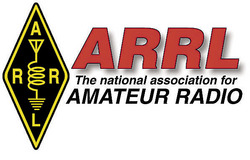 New WAS Award Application Processing on Hold: ARRL is redesigning the basic Worked All States (
New WAS Award Application Processing on Hold: ARRL is redesigning the basic Worked All States (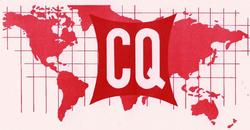 CQ Soliciting Hall of Fame Nominations: CQ is seeking nominations for the Contest and DX
CQ Soliciting Hall of Fame Nominations: CQ is seeking nominations for the Contest and DX 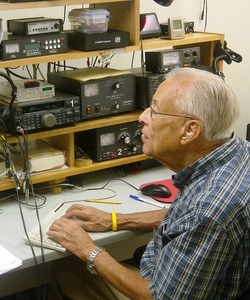 Army MARS Public Affairs Officer Bill Sexton, N1IN/AAR1FP, Retires: Bill Sexton, N1IN/AAR1FP, retired at the end of 2014 as the US Army Military Auxiliary Radio System (
Army MARS Public Affairs Officer Bill Sexton, N1IN/AAR1FP, Retires: Bill Sexton, N1IN/AAR1FP, retired at the end of 2014 as the US Army Military Auxiliary Radio System (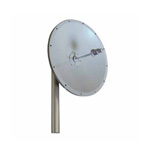 New World Record Claimed on 10 GHz: Two microwave enthusiasts in Australia are claiming a new Amateur Radio distance record on 10 GHz. On January 5, during a tropo opening across the Great Australian Bight, VK6DZ and VK7MO exchanged reports over a 2732 km path, using JT4f mode as well as SSB. The distance surpasses by 36 km the previous World Record of 2696 km from Southern Portugal to Cape Verde Island. VK6DZ was portable at Torbay Hill, 24 km west of Albany, Western Australia. He was running 10 W to a 60 cm dish. VK7MO was portable Cape Portland in northeastern Tasmania, running 50 W to a 77 cm dish. Read
New World Record Claimed on 10 GHz: Two microwave enthusiasts in Australia are claiming a new Amateur Radio distance record on 10 GHz. On January 5, during a tropo opening across the Great Australian Bight, VK6DZ and VK7MO exchanged reports over a 2732 km path, using JT4f mode as well as SSB. The distance surpasses by 36 km the previous World Record of 2696 km from Southern Portugal to Cape Verde Island. VK6DZ was portable at Torbay Hill, 24 km west of Albany, Western Australia. He was running 10 W to a 60 cm dish. VK7MO was portable Cape Portland in northeastern Tasmania, running 50 W to a 77 cm dish. Read 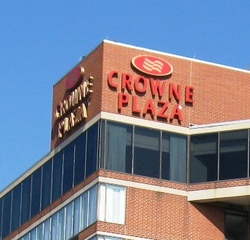 Tickets Now Available for 2015 Dayton Contest, Top Band Dinners: Reservations are now available for the 23rd annual
Tickets Now Available for 2015 Dayton Contest, Top Band Dinners: Reservations are now available for the 23rd annual 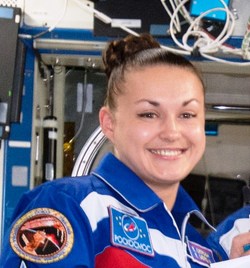 Cosmonaut Yelena Serova Operates RS0ISS for Russian ISS School Contacts: On board the International Space Station, Russian Cosmonaut Yelena Serova, using the call sign RS0ISS,
Cosmonaut Yelena Serova Operates RS0ISS for Russian ISS School Contacts: On board the International Space Station, Russian Cosmonaut Yelena Serova, using the call sign RS0ISS,  Worked All Europe Contest Manager Joerg Puchstein, DL8WPX, SK: Worked All Europe Contest Manager Joerg "Joe" Puchstein, DL8WPX, died December 16, at his home in Zurich, Switzerland. He was 54. Puchstein was an active and enthusiastic contester and DXpeditioner who organized such DXpeditions as VK9LM from Lord Howe (1991, 1996, and 2014), and the S21XX, P29VXX, VK9CR, VK9XY, ZL7DK, VK9DNX, VK9DWX, and VK9DLX DXpeditions. He also was a member of the DR1A team. -- Thanks to The Daily DX
Worked All Europe Contest Manager Joerg Puchstein, DL8WPX, SK: Worked All Europe Contest Manager Joerg "Joe" Puchstein, DL8WPX, died December 16, at his home in Zurich, Switzerland. He was 54. Puchstein was an active and enthusiastic contester and DXpeditioner who organized such DXpeditions as VK9LM from Lord Howe (1991, 1996, and 2014), and the S21XX, P29VXX, VK9CR, VK9XY, ZL7DK, VK9DNX, VK9DWX, and VK9DLX DXpeditions. He also was a member of the DR1A team. -- Thanks to The Daily DX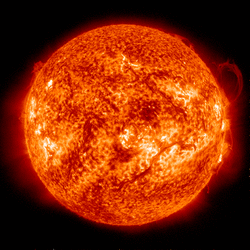 Predicted solar flux for the near term is 140 on January 15-16, 135 on January 17-18, 130 on January 19-20, then 125, 135, and 140 on January 21-23, 130 on January 24-26, 135 on January 27-28, 140 on January 29-30, and, 145 on January 31 through February 7. Flux values then peak at 180 on February 11-12, and dip down to 130 on February 20-22.
Predicted solar flux for the near term is 140 on January 15-16, 135 on January 17-18, 130 on January 19-20, then 125, 135, and 140 on January 21-23, 130 on January 24-26, 135 on January 27-28, 140 on January 29-30, and, 145 on January 31 through February 7. Flux values then peak at 180 on February 11-12, and dip down to 130 on February 20-22.







